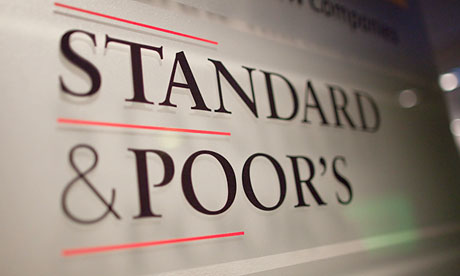Standard & Poor’s has kept India’s sovereign rating grade as “BBB-minus” and a “stable” outlook which is the lowest investment grade. This was because India’s sound external position was offset by its low income and weak public finances. The agency also proposed that they do not expect any change in its rating either this year or in 2016.This rating will contradict Prime Minister NarendraModi’s government which has argued that India deserves a stronger rating as they have took efforts to keep historically high fiscal deficits in check and improve economic fundamentals.
Rival agency Moody’s Investors Service also kept India’s rating at its lowest investment grade but has raised its outlook to “positive” from “stable”. This was because it took into consideration the policymakers’ efforts to lift economic growth. Fitch Ratings also rated India as “BBB-minus” with a “stable” outlook.
S&P also welcomed India’s measures to improve the business climate, labor flexibility and the energy sector but also noted the fiscal challenges in generating revenue and controlling spending on subsidies. India has a better economic fundamental when compared with other emerging market. This is because of their strong foreign exchange reserve which is around $350 billion and the country’s efforts to keep the current account and budget deficits in check.
S&P said that India’s rating reflects on its sound external profile and improved monetary credibility which includes the adoption of inflation targeting and the steps taken by the country to set up a monetary policy committee to decide on its interest rates. The agency also expects India’s economy to grow by 7.4% in this year and to attain an average growth rate of 8 %from 2015 to 2018. But this is to be affected by its low per capita income, of $1,700 this year.
It also called India’s general government borrowing and servicing costs “sizable” as it accounted about 70 percent of gross domestic product. It also cited the fiscal constraints which is to be improved .This includes the losses at the state electricity boards and the high exposure of Indian banks to government debt.
S&P also added that any rating improvement requires reforms that markedly improves the government’s fiscal position and brings net general government debt below 60 percent of GDP.

